Looking for a challenge, I took on the task of repairing a broken piece of contemporary art by the glass artist Richard Meitner as part of the National Museums Scotland Dan Klein Glass Conservation Project.
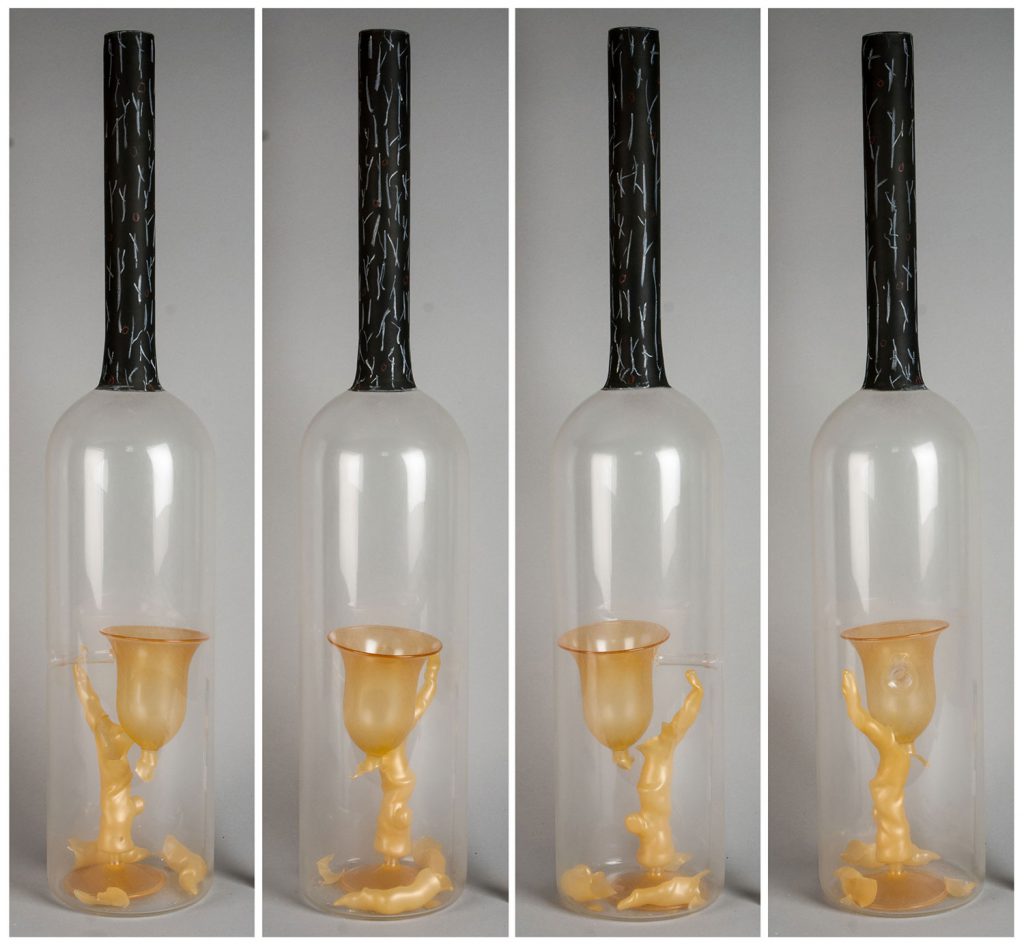
The work, Branch, features a yellow goblet with three protruding branches suspended inside a large bottle. It was broken before arriving at National Museums Scotland as a part of the Dan Klein & Alan J. Poole Private Collection of Modern Glass, which was donated to the Museum in 2009.
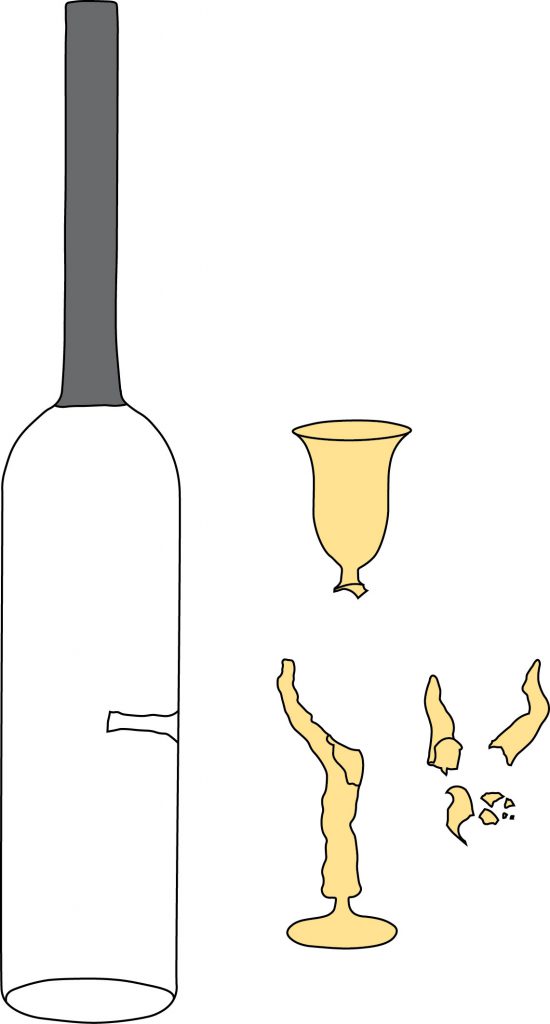
When thinking about how the work could be repaired, the obvious option would be to cut the base of the bottle open, remove the broken pieces, repair the goblet and replace it inside the bottle before closing the bottle again with adhesive. However, like any impossible bottle, such as ship in a bottle, the mystery and wonder of how the object came to be inside the bottle would be ruined if you could simply open the bottle! In order to preserve the integrity of the bottle, and avoid causing further damage, I proposed an approach for mending the goblet inside the bottle.
I knew that I would need to find or make some special tools in order to mend this object, so I first set to searching the internet for giant tweezers! It turns out that aquarium suppliers offer huge tweezers for when you want to feed a snake or tidy up your aquarium plants. By adding silicone padding to the tweezer tips, I had a tool for moving pieces of glass through the neck of the bottle.
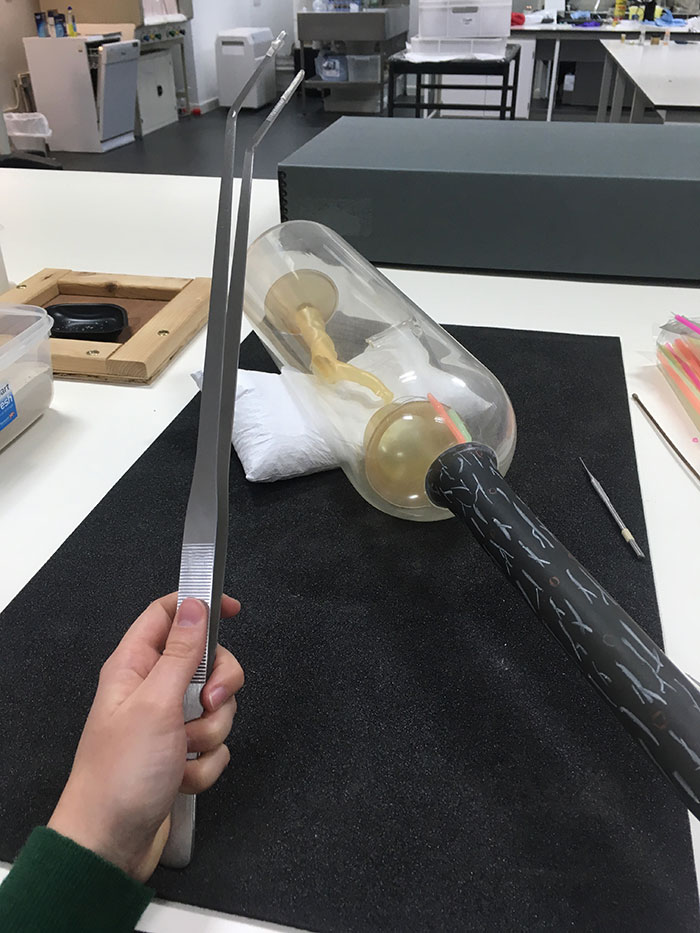
The two broken branches and six other fragments were removed from the bottle by carefully placing the bottle on its side and tipping the bottle so that the pieces could be removed with the large tweezers.
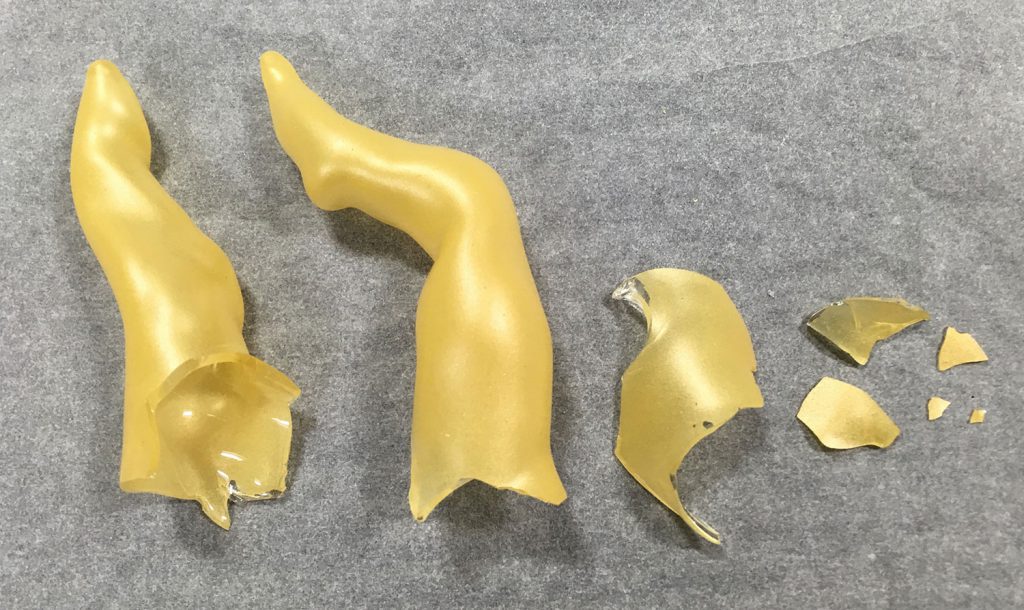
Unfortunately, the aquarium grabbers I ordered didn’t fit through the neck of the bottle and the tweezers still weren’t long enough to reach far past the neck of the very large bottle. I needed a way to grab, hold and move the larger pieces inside the bottle, so I started investigating laparoscopic surgical tools, such as forceps, graspers and loops. I created lassos using drinking straws and fishing line to loop around and secure the cup and the only remaining attached branch in order to move the large sections of the glass around in the bottle.

The fragments I removed were reattached to one of the branches outside of the bottle. Once the joins were cured, I added small tabs of clear plastic film to the inside of the break edges on the branches to add some extra support to the joins. Glass joins can easily slip and move when bonding in normal circumstances, so adding the plastic tabs meant that when I positioned the branch I could catch the other side of the tab on the inside of the other join, helping to align it.
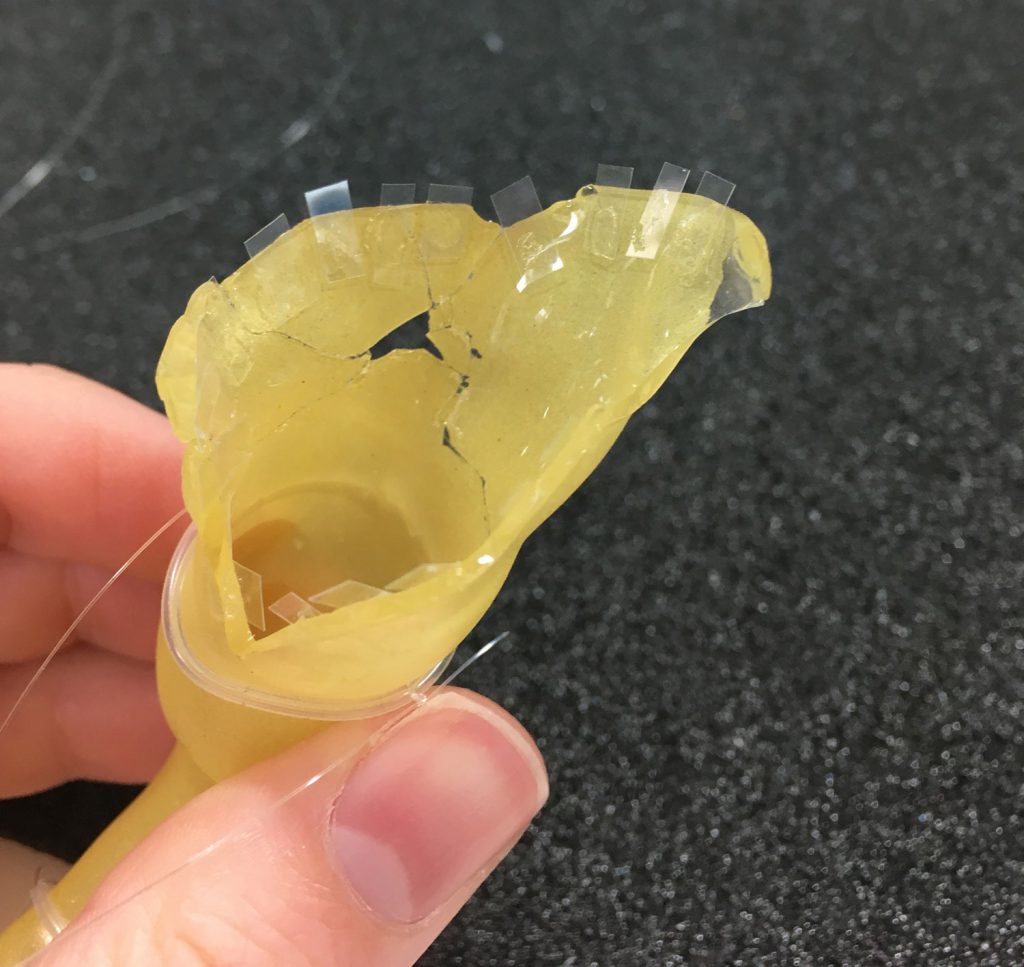
Before I could align the join, I needed a way to move the branch inside the bottle. This time I was inspired by puppeteers! I tied two stretchy loops of silicone tubing around the top and bottom of the branch and to each of these I attached two long lengths of fishing line, giving me four strings that I could use to move the object in all directions. The branch was placed back inside the bottle and could be manipulated like a puppet from outside of the bottle.

The adhesive could then be applied to the break line via the horizontal glass tube in the side of the bottle. I added tubing to a syringe in order to introduce the adhesive to the edges inside the bottle.

I then repeated the process for the second branch and when the adhesive had cured I could remove the puppet strings.
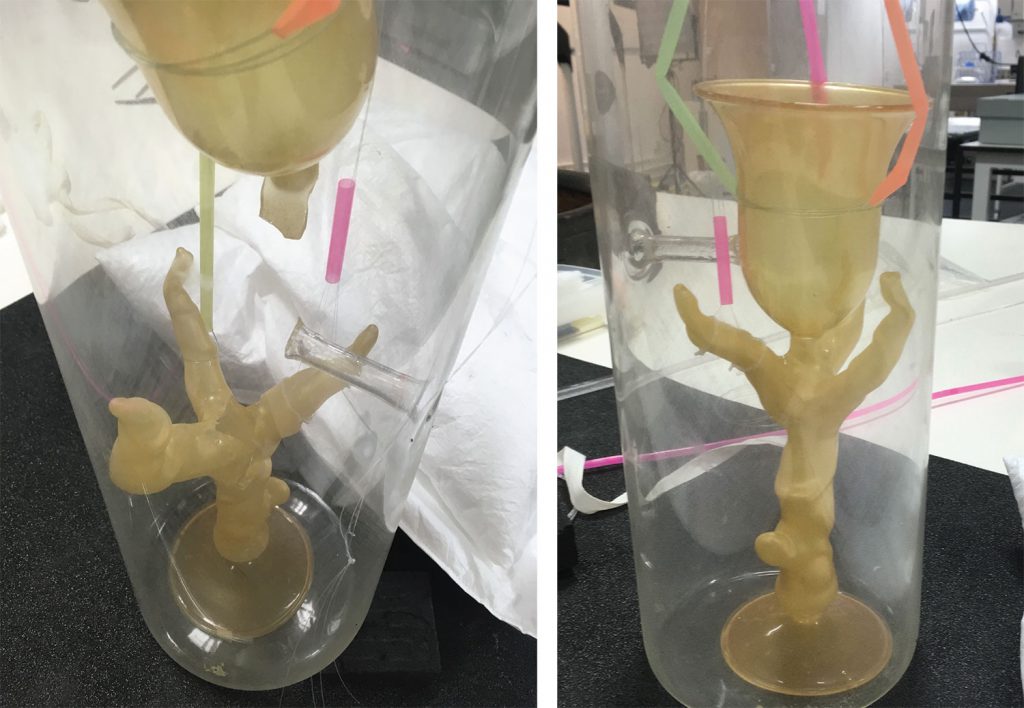
The cup of the glass was then attached and when it had cured, the whole yellow glass was lifted up to attach to the horizontal glass tube. The join between the yellow glass and the horizontal tube is a point of weakness, with the weight of the yellow glass hanging from it, so to provide additional support I added a Perspex rod through the tube and attached it to the tube and the far side of the inside of the stem of the yellow glass.
Finally, the moment of truth came when I removed the drinking straw lassos and the bottle stood with the yellow glass suspended inside once again.
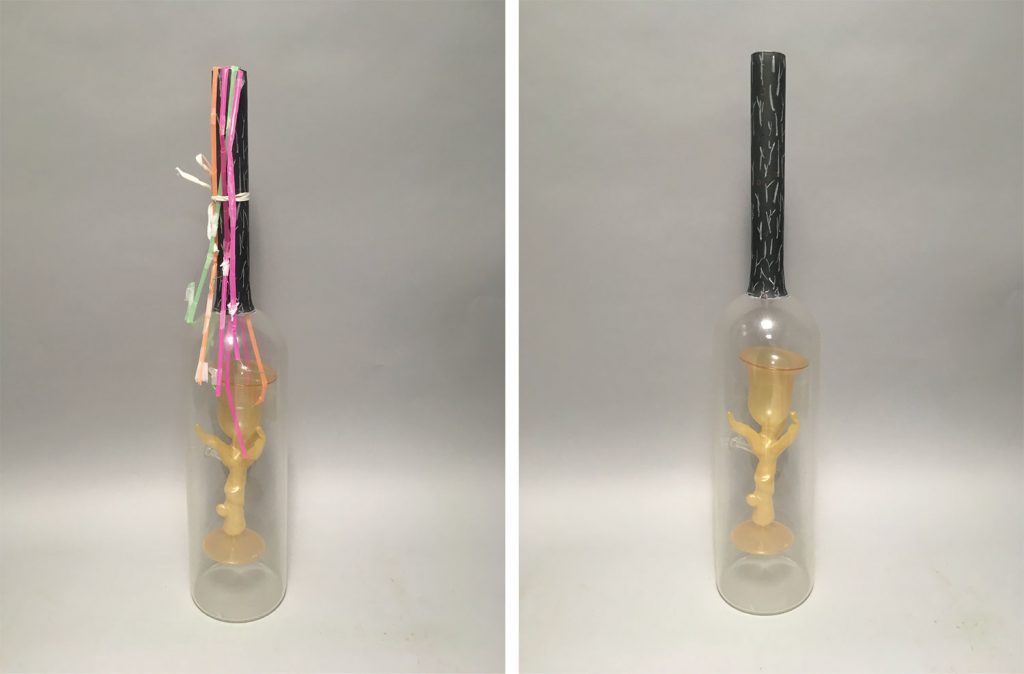
The object is once again intact, and can be viewed again as a whole. This challenging treatment pushed me to be creative and really tested my hand skills – manoeuvring the thin glass branches into position was more difficult than the photos suggest. However, it was immensely satisfying to finally see the piece as it was originally intended.
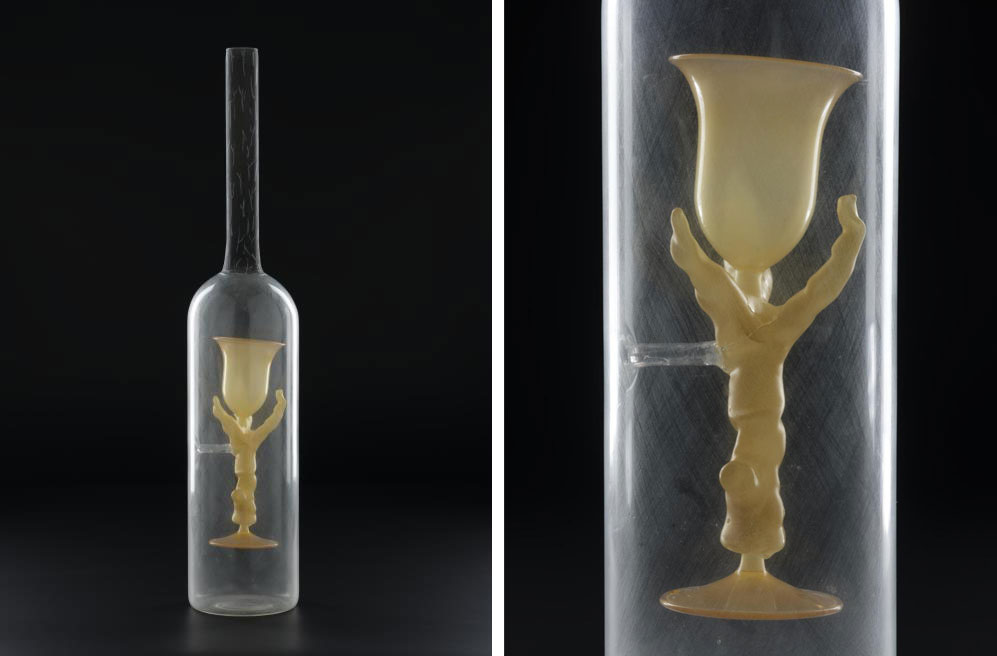
I am so grateful to my colleagues in artefact conservation who helped me brainstorm, provided endless encouragement, and helped in tricky moments when I needed an extra pair of hands to hold the bottle while manoeuvring the delicate glass fragments. My thanks also go my curatorial colleagues who facilitated this project and of course the artist, Richard Meitner, who created this wonderful object!
